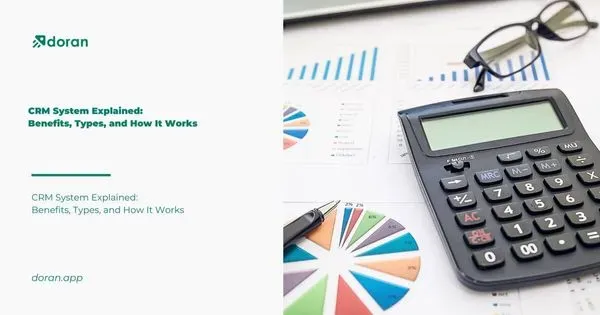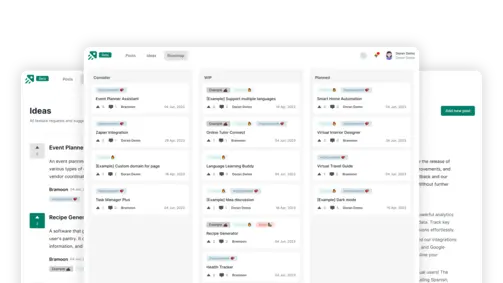Mastering Digital Challenges: Digital Roadmap Examples for Growth
Create changelog and product roadmap for your product
Explore nowTable of contents 6 min
In the age of digital evolution, having a robust digital roadmap is pivotal for businesses aiming to harness the full potential of technology. This article delves into the significance of digital roadmap examples. It provides a window into how organizations from various sectors utilize these roadmaps to align their digital strategies, adapt to change, and drive technological innovation. Whether you’re a technology leader, entrepreneur, or digital strategist, these real-world examples offer a roadmap of your own for navigating the ever-changing digital landscape.
Definition of a Digital Roadmap
Before coming into any of our digital roadmap examples, let’s find out about the definition of a digital roadmap. A digital roadmap serves as a guide for your next business. It should include a summary of your long- and short-term goals as well as the connections between the digital activities required to reach them. It should ideally explain how to translate the goals of your company into a workable plan that lowers risk and boosts profitability. The digital roadmap, often known as a strategy roadmap or digital transformation, is an essential component of every firm. A vision to implementation flow is often created by the roadmap, which bridges the gap between the high-level strategy and the specific execution plan.
What Makes Digital Roadmaps Crucial?

Digital transformation roadmap examples are a type of planning, and it’s critical to prepare in order to achieve your business goals. Without a suitable structure that permits flexibility, how will you know what to implement?
It’s a good idea to first ascertain the current state and desired future state of your company. Next, make a map outlining your intended route. To design an efficient and revolutionary digital roadmap for your company, you will need to make a few critical evaluations and choices. These consist of:
Model of Future State Operations
Prioritize understanding your present operations and streamlining any procedures required to reach your desired future state. After that, you can begin to match these requirements with technical solutions.
The Comparison between the Amount of Change and the Risk
It is critical to evaluate the level of change your company can withstand in relation to the risk involved in implementing that change.
Levels of Customization
At this level, you will integrate your knowledge of operations with a grasp of the capabilities of various technology solutions. Determine which areas require customized approaches and which can be satisfied by standard options.
Best of Breed against a Single System
Selecting your Enterprise Resource System (ERP software) will be necessary in relation to customization. You must ascertain which aspects of your company are better served by a best-of-breed system and which may be handled by a single, core ERP.
Niche Solutions versus Enterprise Systems
Making the right decisions about software solutions and implementation partners for your business is crucial. This can be ascertained by taking into account:
-
Comparing software partner culture and solutions versus company cultures
-
Is technology oriented towards a particular industry or business function?
Migration of Data
Making the right technological solution decision depends in large part on your data migration plan. Take into consideration how your new ecosystem will facilitate this data migration.
Modification of Management
Consider the effects that technology advancements will have on your company’s workforce and what policies and training will be necessary to ease the transition.
The Process of Integrating and Designing Solutions
The architecture of the solution is a crucial document that combines your existing situation with the intended future workflows and applications for your company. The integration procedure is crucial since it influences data movement.
Find out more: [2023] Inspiring Technical Roadmap Examples: Charting Future
Components of a Successful Digital Product Management Roadmap

A digital plan is incomplete without the ideal components, much like an excellent recipe.
Keeping that in mind, these are the components you ought to incorporate to guarantee a seamless future for your enterprise before making any digital roadmap examples.
Your Goals for the Business
The vision revolves around your objectives. By clearly outlining the quantifiable and strategic objectives your digital roadmap will assist you in achieving, you’re laying out your stall from the outset. As always, using SMART goals—Specific, Measurable, Achievable, Relevant, and Time-Bound—is a smart idea.
The Timeline
If your roadmap lacks scope, it will be meaningless. For this reason, every initiative in your plan for digital transformation needs to have a deadline. Make sure to take dependencies and resource limitations into account as you work; the last thing you want to do is set an impractical deadline.
Important Stakeholders
As a long-term plan, your digital roadmap will always incorporate at least one (but typically many more) internal team, regardless of its focus. The important stakeholders who will be influenced by any effort you propose to build must be identified when creating a digital roadmap.
Risks
While it’s tempting to put off worrying about what can go wrong, knowing what hazards and difficulties your plan might encounter will help you prepare for the worst in digital roadmap examples. Creating a backup plan now could turn things around later.
KPIs, or Key Performance Indicators
You should choose your key performance indicators (KPIs) or core success metrics carefully in your digital roadmap examples so that you can assess the accomplishment (or lack thereof) of each of your digital endeavors.
Read more: Charting Success with Zero Cost: Best Roadmap Tools Free
Digital Roadmap Examples

The digital roadmap’s adaptability is one of its best features. Next up is one of our digital roadmap examples for your reference.
Take digital marketing roadmaps for an example of one of the digital roadmap examples. These might make it easier for a business to develop and carry out a marketing strategy with a clear emphasis.


Identifying the precise marketing campaigns that will enable you to accomplish your company’s goals is the first and foremost step in making a digital marketing roadmap.
Although there is a lot of territory to cover in your digital marketing roadmap, you may want to include the following:
-
Acquiring traffic
-
Efforts to raise brand awareness
-
Generation of leads
-
PPC (Pay Per Click) marketing
-
Search Engine Optimization (SEO)
But there is something you must note in mind: The digital roadmap examples are not limited to digital marketing only. Below are some of our examples of roadmaps for digital transformation and also business strategies:


As we conclude our exploration of digital roadmap examples, it’s evident that roadmaps are not mere guides; they’re the dynamic instruments that organizations employ to navigate the complex digital landscape. Whether it’s embracing digital transformation, fostering innovation, or staying ahead in the tech race, these examples illustrate the power of well-structured digital roadmaps. By integrating the insights from this guide, you’re poised to not only understand the strategic value of digital roadmaps but also to implement them as dynamic tools for digital success, resilience, and innovation.
What to not miss out on our blog
Gain insightful knowledge and invaluable experiences from dedicated experts.

CRM System Explained: Benefits, Types, and How It Works
Discover everything about CRM system. Learn the benefits and how a CRM system works to improve customer relationships and streamline business operations.

Are you ready? Start your free trial today.
Enhance communication, keep track of the progress, understand customers' insight and more by taking your first trial on Doran.
Sign up for free

